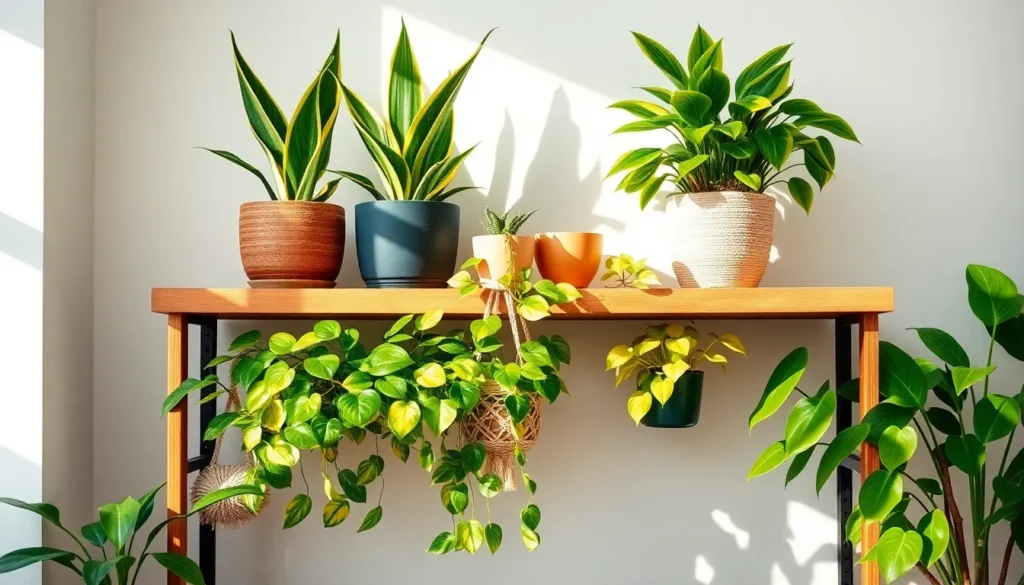Welcoming a touch of greenery into your home is like inviting a breath of fresh air into your daily life. Whether you’re just starting your journey as a plant parent or you’ve nurtured a garden for years, indoor plants offer a delightful opportunity to bring nature’s tranquility indoors. They not only purify the air but also provide a sense of accomplishment and peace that can brighten even the dreariest of days. As we explore the world of easy indoor plants, you’ll discover that these little green companions are perfect for both the novice and the seasoned green thumb.
Bringing plants into your home is more than a decorative choice; it’s a commitment to nurturing life. For beginners, this might seem daunting, but fear not—many indoor plants are surprisingly forgiving and require minimal effort to thrive. This article will guide you through a selection of the most resilient and rewarding indoor plants, each with its own charm and personality. You’ll learn practical tips on light, water, and care, ensuring that your new leafy friends grow happily in your care.
Whether you have just a sunny windowsill or a cozy corner, there are plants suited for every space and lifestyle. From the elegant snake plant to the cheerful pothos, these easy-care beauties are sure to enhance your home and boost your confidence as a gardener. By the end of this article, you’ll be equipped with the knowledge to choose the perfect plants for your home, ensuring a lush, green sanctuary that you can proudly nurture and enjoy. Let’s embark on this verdant journey together, transforming your living space into a thriving haven of greenery.
Choosing Beginner-Friendly Indoor Plants

When selecting indoor plants for beginners, consider options that are low-maintenance and adaptable to various environments. Snake plants (Sansevieria) are an excellent choice as they tolerate low light and require minimal watering, making them perfect for busy lifestyles.
Another great option is the Pothos plant, known for its ability to thrive in a variety of lighting conditions. Water it when the soil feels dry to the touch, and you’ll find it forgiving if you forget a watering or two.
For those looking to add a splash of color, Peace Lilies are ideal, as they flourish in low light and only need watering once a week. Ensure their soil remains slightly damp, and they will reward you with beautiful white blooms.
Beginners should also consider the Zamioculcas Zamiifolia, or ZZ plant, which is nearly indestructible. It prefers to dry out completely between waterings and can survive in both low and bright indirect light.
Understanding Light Needs for Growth
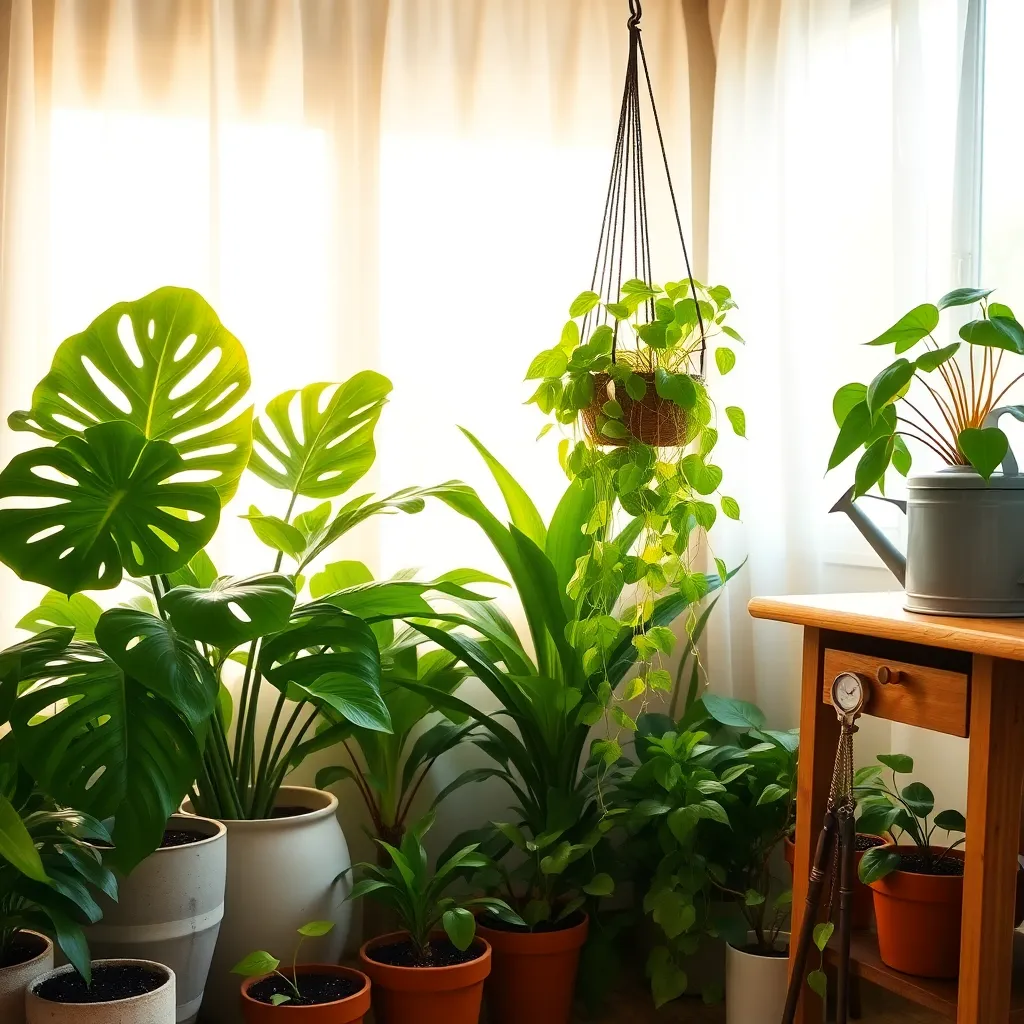
Understanding the light requirements of your indoor plants is crucial for their growth. Most indoor plants thrive in bright, indirect light, but some can adapt to lower light conditions.
Place your plants near windows where they can receive the most natural light. South-facing windows provide the brightest light, while north-facing windows offer less intense light, suitable for low-light plants like snake plants or pothos.
Observe how light moves through your space during the day to find the best spot for each plant. If natural light is insufficient, consider using artificial grow lights to supplement, ensuring they mimic the sun’s natural spectrum.
For beginners, it’s helpful to know that too much direct sunlight can scorch plant leaves, especially for tropical varieties. On the other hand, insufficient light may lead to leggy growth and dull leaf color, indicating the plant needs a brighter spot.
Simple Watering Tips for Success
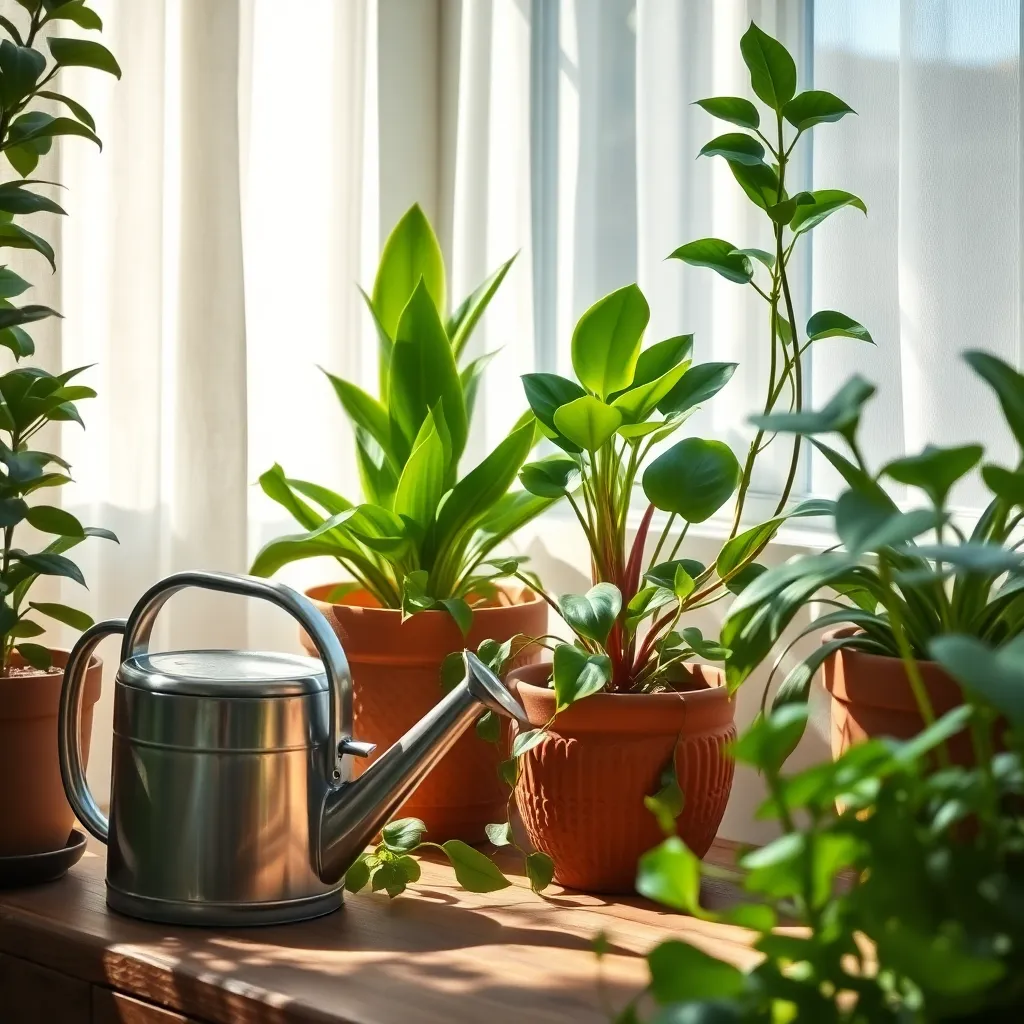
Watering is one of the most critical aspects of indoor plant care, but it’s also where many gardeners make mistakes. Overwatering is the number one cause of plant failure, so it’s important to find a balance that meets your plant’s needs without drowning its roots.
To determine when to water, simply stick your finger about an inch into the soil. If it feels dry, it’s time to water; if it’s still moist, wait a few more days. Some plants, like succulents and cacti, prefer their soil to dry out completely between waterings, while others, like ferns, enjoy more consistent moisture.
When watering, ensure the entire root ball is saturated, allowing excess water to drain from the bottom of the pot. Using pots with drainage holes is crucial, as they prevent water from collecting at the bottom and causing root rot. For plants in decorative pots without drainage, consider using a nursery pot inside and remove it to water, letting it drain fully before returning it to the decorative pot.
Advanced gardeners can benefit from learning about the specific water needs of each plant species. For instance, plants like peace lilies and philodendrons signal their need for water when their leaves start to droop slightly. Investing in a moisture meter can also provide precise readings, taking the guesswork out of deciding when to water.
Basic Soil and Potting Guidelines
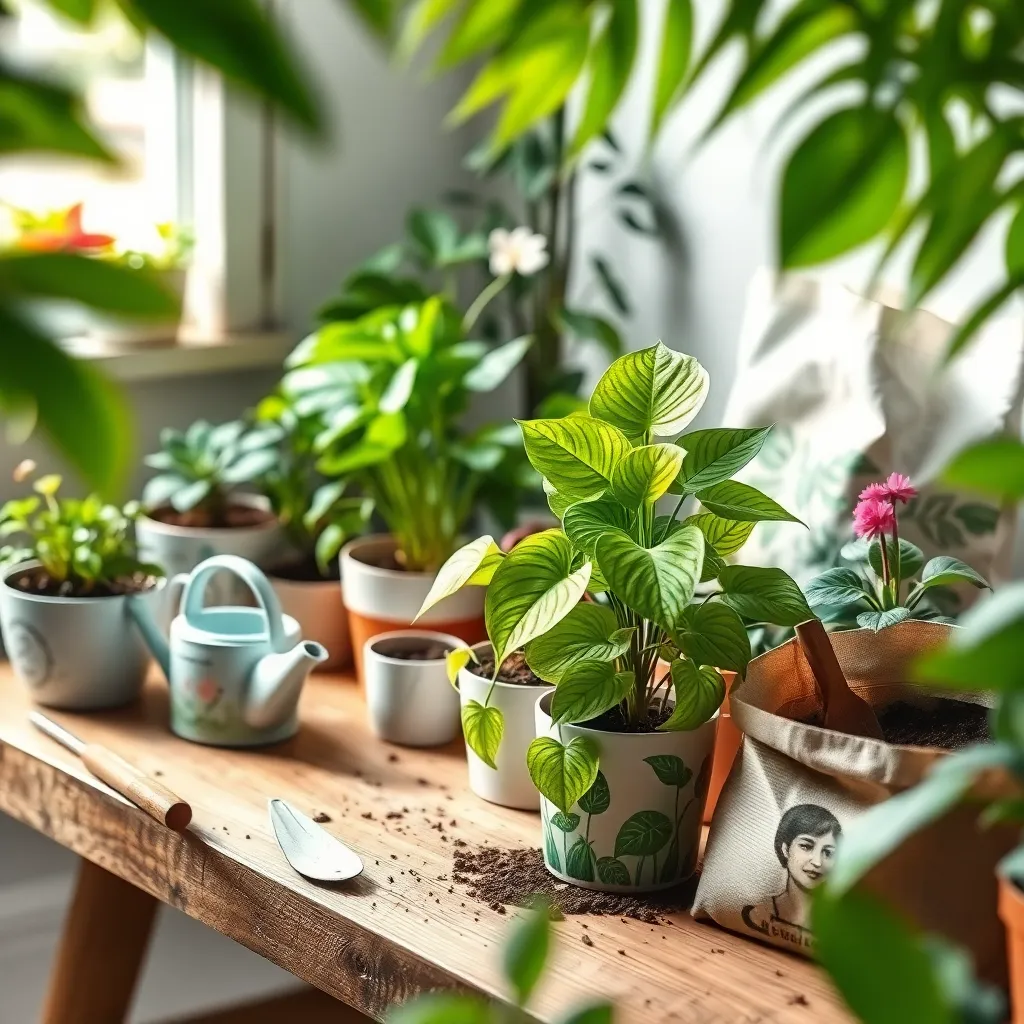
When it comes to potting indoor plants, choosing the right soil is crucial for their growth and health. For most indoor varieties, a general-purpose potting mix works well, but ensure it is labeled as being suitable for indoor use to avoid pests and diseases.
Drainage is a key factor in preventing root rot, so use pots with drainage holes and consider placing a layer of pebbles at the bottom. This setup helps excess water escape, keeping roots healthy and allowing for aeration.
For plants that prefer drier conditions, such as succulents, opt for a special cactus mix that contains more sand for improved drainage. Adding perlite or coarse sand to your potting mix can also enhance drainage and aeration, benefiting a wide range of indoor plants.
When repotting, gently loosen the root ball to encourage new growth and ensure a snug fit in the new pot. Choose a pot that is only slightly larger than the previous one, as too much space can lead to overwatering issues.
Common Care Mistakes to Avoid
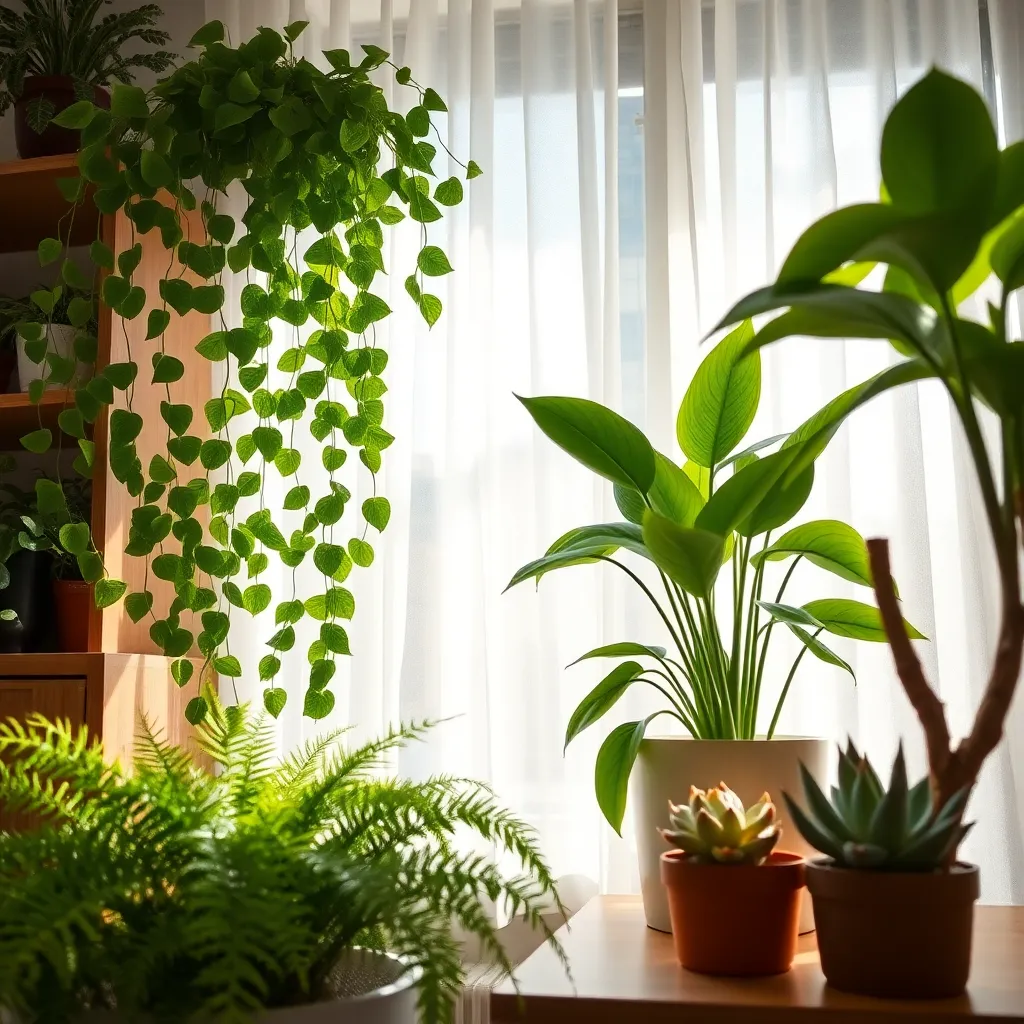
A common mistake many beginners make is overwatering their indoor plants. Most indoor plants prefer to dry out between waterings, so it’s essential to check soil moisture by sticking your finger about an inch deep into the soil.
Another frequent error is using the wrong type of soil for indoor plants. Opt for a well-draining potting mix, as heavy, water-retentive soil can lead to root rot and other issues.
The placement of your plants can also significantly impact their health. Ensure your plants receive the appropriate amount of light by evaluating their requirements—some thrive in direct sunlight, while others prefer indirect or diffused light.
Neglecting to clean the leaves of your plants is a mistake that can hinder their ability to photosynthesize. Wipe the leaves with a damp cloth every few weeks to remove dust and allow the plant to breathe and absorb light more efficiently.
Finally, many gardeners overlook the importance of proper pot size. Using a pot that’s too large can cause the soil to retain excess moisture, while a pot that’s too small can restrict root growth and nutrient uptake.
Conclusion: Growing Success with These Plants
In this journey through the world of easy indoor plants for beginners, we’ve explored five key relationship concepts: the importance of nurturing through consistency, the balance of giving space and attention, the patience required for growth, the adaptability to change, and the joy of mutual flourishing. Each of these insights not only applies to caring for plants but also enriches our understanding of healthy, thriving relationships.
As your actionable next step, choose one plant from our list—such as a resilient snake plant or a nurturing peace lily—and bring it into your home. As you care for it, reflect on how these principles can be woven into your relationships, fostering deeper connections and understanding.
To ensure these insights remain at your fingertips, save or bookmark this article now. It’s a valuable resource you’ll want to revisit as you nurture both your plants and personal connections.
Looking ahead, remember that the seeds of a successful relationship are planted in the soil of understanding and care. With each step you take today, you are investing in a future where your relationships bloom beautifully. Empower yourself with this knowledge, and watch your relationships thrive.

